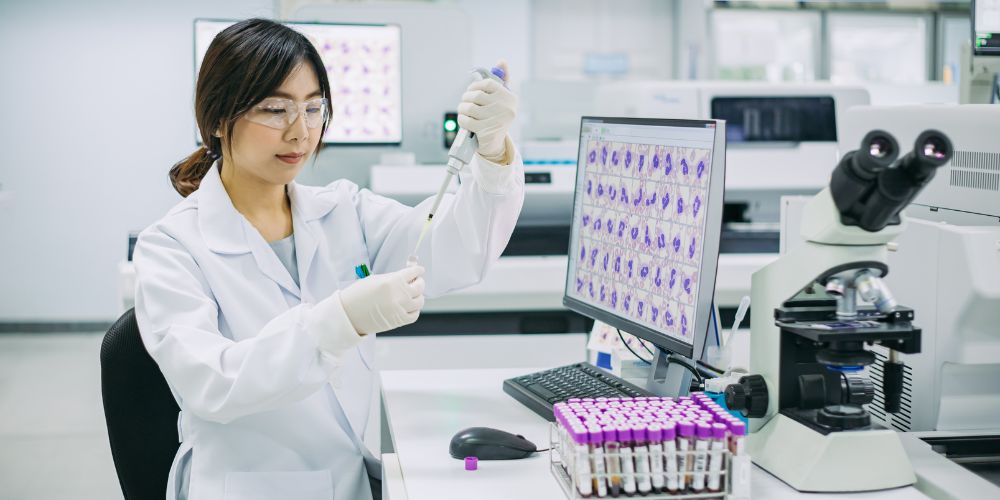Career Overview: Medical Technologists
Medical technologists, also known as clinical laboratory scientists, play a critical role in the healthcare system by conducting tests that assist in diagnosing, treating, and preventing diseases. With advancements in medical technology and the increasing need for accurate and timely diagnostics, medical technologists are in high demand worldwide. This article provides an overview of the profession, types of specializations, salary expectations, and job market trends across key countries.
Types of Medical Technologists
- Clinical Laboratory Technologists
These technologists perform a variety of tests on bodily fluids, such as blood and urine, to detect diseases and infections. They typically work in hospitals, laboratories, and diagnostic centers. - Microbiology Technologists
Specializing in microbiology, these technologists test for infections caused by bacteria, viruses, fungi, and parasites. They work closely with infection control teams in hospitals and research facilities. - Blood Bank Technologists (Immunohematology)
Blood bank technologists perform tests related to blood typing, compatibility, and transfusions. They work in blood banks and hospital labs, ensuring safe and compatible blood transfusions. - Cytotechnologists
These technologists examine cells under a microscope to detect cancerous and pre-cancerous cells. They often work in pathology labs and are critical for early cancer detection. - Molecular Biology Technologists
Focusing on DNA and RNA analysis, molecular biology technologists perform genetic testing, often used in prenatal screenings, cancer diagnostics, and personalized medicine. - Histotechnologists
Histotechnologists prepare tissue samples for examination by pathologists. They often work in hospitals and pathology labs, assisting with cancer diagnoses and other tissue-related diseases.
Salary Expectations
Medical technologists’ salaries vary based on specialization, experience, country, and work setting. Below is an approximate range of salaries across several countries for medical technologists at different career levels.
| Country | Entry-Level Salary | Mid-Level Salary | Senior-Level Salary | Specialized Roles Salary |
|---|---|---|---|---|
| United States | $55,000 – $70,000 | $70,000 – $90,000 | $90,000 – $110,000+ | $80,000 – $120,000+ |
| Canada | CAD 50,000 – 65,000 | CAD 65,000 – 85,000 | CAD 85,000 – 100,000+ | CAD 75,000 – 100,000+ |
| United Kingdom | £25,000 – £35,000 | £35,000 – £45,000 | £45,000 – £60,000+ | £40,000 – £60,000+ |
| Australia | AUD 55,000 – 70,000 | AUD 70,000 – 90,000 | AUD 90,000 – 110,000+ | AUD 80,000 – 100,000+ |
| Germany | €40,000 – €50,000 | €50,000 – €65,000 | €65,000 – €80,000+ | €60,000 – €85,000+ |
| China | CNY 100,000 – 150,000 | CNY 150,000 – 200,000 | CNY 200,000 – 300,000+ | CNY 150,000 – 250,000+ |
Note: Salaries are approximate and can vary based on experience, facility, region, and specialization.
Job Market Trends by Country
- United States
In the U.S., the demand for medical technologists is strong, particularly due to an aging population and the need for diagnostic services. The Bureau of Labor Statistics projects growth in clinical laboratory positions, especially in urban areas where hospitals and diagnostic labs are concentrated. - Canada
Canada’s healthcare sector has a growing need for medical technologists in both public and private sectors. There is particular demand in rural areas and for specialized roles like cytotechnologists and microbiology technologists. - United Kingdom
In the U.K., the National Health Service (NHS) employs a majority of medical technologists, with roles in microbiology, pathology, and blood transfusion services being highly valued. Demand is also growing for technologists in the private healthcare sector. - Australia
Australia has a high demand for medical technologists, particularly in microbiology, blood bank, and histology. The country is facing shortages in rural and remote areas, creating opportunities for technologists willing to work outside major cities. - Germany
Germany’s healthcare system sees consistent demand for laboratory technologists, especially those specializing in microbiology and molecular biology. The need for diagnostic services is expected to increase, spurred by the aging population and healthcare advancements. - China
In China, the medical technology field is growing rapidly, driven by the expanding healthcare system and government support. There is strong demand for skilled technologists in urban hospitals and research labs, particularly in molecular diagnostics and clinical pathology.
Educational Requirements and Certifications
To become a medical technologist, one typically needs a bachelor’s degree in medical technology, clinical laboratory science, or a related field. Many countries require certification or licensure for medical technologists, particularly for specialized roles.
- United States: Certification through the American Society for Clinical Pathology (ASCP) or American Medical Technologists (AMT) is common.
- Canada: Certification through the Canadian Society for Medical Laboratory Science (CSMLS) is required in most provinces.
- United Kingdom: Registration with the Health and Care Professions Council (HCPC) is necessary to work in clinical laboratories.
- Australia: Registration with the Australian Health Practitioner Regulation Agency (AHPRA) and certification through the Australian Institute of Medical and Clinical Scientists (AIMS) are common.
- Germany: A state-recognized vocational training program or a university degree in medical technology is required.
- China: Medical technologists often need certification from the National Health Commission and experience in a clinical laboratory.
Conclusion
A career as a medical technologist offers diverse opportunities and a vital role in the healthcare sector, making it both rewarding and in-demand worldwide. As healthcare and diagnostics evolve, specialized and advanced roles within medical technology are projected to grow, creating strong prospects for aspiring technologists in various global markets.

